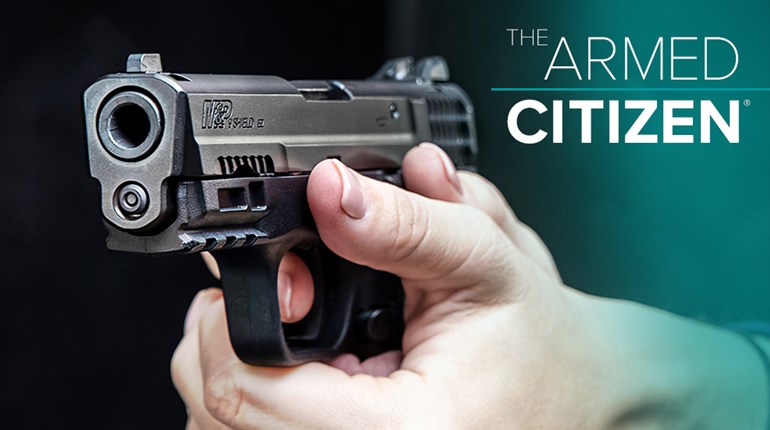
The new Force X2 12-gauge load from Federal represents the most noteworthy advancement in defensive-shotgun ammunition in recent memory.
Over the last several decades, we’ve seen notable advancements with regard to ammunition. Things like the Federal Hydra-Shok Deep bullet, Black Hills’ Honey Badger load, the Critical Duty line from Hornady and Winchester’s PDX1 Defender are all noteworthy examples of defensive-handgun ammunition innovations. Similarly, Hornady’s ELD bullets—and new cartridges like the Creedmoor, Valkyrie and 6 mm ARC—have taken rifle shooting to a new level. For the defensive shotgun there’s not been a lot to talk about, but with the new Force X2 load, Federal has changed that situation. It’s the most important defensive-shotgun-ammunition advancement I’ve seen.
Why do I believe this new load is so important? Well, put simply, it fundamentally doubles the effectiveness of 00 buckshot, and it does so without increased recoil or requiring any special modification to the firearm.
With Force X2, Federal’s goal was to deliver a hard-hitting buckshot load that would increase tissue damage, dump all of its energy inside the target and minimize the risk of overpenetration. Like common 00 buck loads, the Force X2 load contains nine, .32-caliber, 00 buck pellets. They are housed in a 2¾-inch 12-gauge shell and will exit the barrel with a nominal muzzle velocity of 1,245 fps. The 1-ounce payload is buffered, and the pellets are copper-plated.
The main difference between Force X2 and standard buckshot is that the Force X2 pellets are made from a high-antimony-content lead core with a central slit and a hinge that initiates separation/splitting after impact. If you fish, you might say that Force X2 pellets look like split shot. If you’re from Generation X, you might say they look like Pac-Man.
As the Force X2 pellets begin to penetrate, they separate in the middle, delivering 18 wound tracks as opposed to nine. This separation creates additional tissue damage and increases energy transfer. But also, the resulting lighter-weight split shot will not penetrate as deeply as traditional 00 buck. This effectively decreases the concerns of overpenetration and the risk to innocents.
As radical and inventive as this concept sounds, in reality it’s not. Using split shot in a shotshell is nothing new to crafty handloaders and resourceful outdoor enthusiasts. I’ve been told that during the big war—World War II—when buckshot was hard to find, some hunters would open shotshells, dump the shot and then replace the payload with split shot for deer hunting. Others have told me they reloaded their own shotgun shells with split shot for the added lethality they assumed it would deliver. Of course, this is what my grandfather would have called hillbilly engineering; with Force X2, Federal has taken this creative concept, and with some crafty actual engineering, perfected it.
To see how effective this new load might be, I conducted some tests with the Force X2 loads. First, I wanted to see what kind of patterns could be expected at defensive-shotgun ranges. Using a Remington 870 with a 20-inch barrel, pattern size at 5 yards was about 5 inches. At 10 yards the pattern opened to 8 inches, at 15 yards it measured 11 inches and at 20 yards it spread to 15 inches. At 25 yards the pattern opened to 19 inches. This was reasonably close to the information provided by Federal—the company tested the load out of a barrel with an improved-cylinder choke and found the pattern spread at 20 yards to be 12 inches. In either case, this is about what you could expect to see from a common, nine-pellet 00 buck load.
More interesting was the terminal performance. I found that the pellets split apart after traveling about 2 to 3 inches inside a block of Clear Ballistics gelatin. Penetration ranged from about 6 inches to around 12 inches, with an average depth of about 10 inches. In 10-percent ordnance gelatin, these depths would probably have been about 15 percent deeper. Depending on impact velocity, common 00 buck will penetrate about 16 to 20 inches with a bit more consistency. Most importantly, every single pellet of every Force X2 load I tested separated. This is not a gimmick—with Force X2 you will get double the wound channels you would see from common 00 buck.
Why the variation in and reduction of penetration depth? For starters, a Force X2 00 buck pellet weighs 12 percent less than a standard lead 00 buck pellet. When it splits apart, it weighs 56 percent less. Additionally, after the pellet splits, it will not travel through whatever it is penetrating as efficiently as a round ball. In other words, it will tumble and lose velocity and momentum. However, this tumbling and momentum loss is what allows the two split halves of a single Force X2 pellet to damage more tissue at vital organ depth, while lessening concerns of overpenetration.
The Federal press release on Force X2 ammunition states, “Force X2 was developed by Federal’s expert team of engineers who solved a problem their customers didn’t necessarily know they had.” I guess that’s one way of looking at it. What I’m wondering is that if one of those Federal engineers who worked on the Force X2 project might have had a grandfather out of the Greatest Generation, one who understood the meaning of adapt, improvise and overcome. A man who might have had a lot more split-lead fishing sinkers than he did buckshot. You know, back when times were really hard.




































